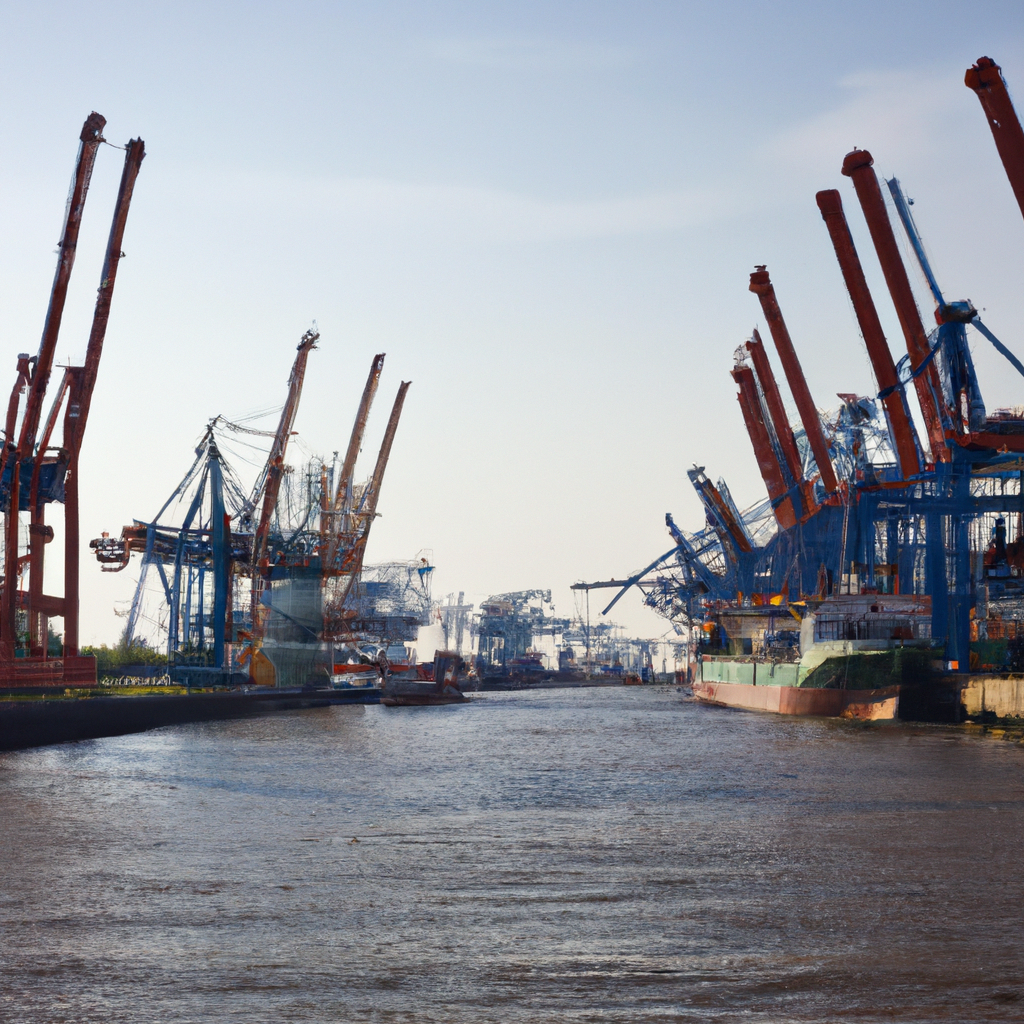Port of Hamburg In Germany: Overview,Prominent Features,History,Interesting facts
Overview:
The Port of Hamburg in Germany is the country's largest and busiest port, located within the Freie und Hansestadt Hamburg in the Elbe Estuary on the North Sea. It is the country's largest seaport and second biggest port system in traffic and freight by gross tonnage, respectively. The port is home to the second biggest container port in Europe and home to over 150 shipping and forwarding companies. In addition, several specialized freight and handling centers make the port of Hamburg one of the most diversified industrial centers in Germany. The port of Hamburg is integral to Hamburg’s reputation as one of the most important economic centers in Europe, hosting an array of industries including trade, logistics, shipbuilding, processing, and services. The port represents the unique mix of local and international businesses and trade, as well as its vibrant, diverse culture. With its status as a free port, Hamburg’s premium location allows for considerable discounts on shipping and passenger transport. The port of Hamburg is strategically located and connected in Europe, making it ideal for those seeking an entry route into trading services, the EU, or other international destinations. It’s also one of Germany’s most vibrant cities, home to many festivals, attractions, and a diverse population. The port of Hamburg is hugely important for Germany's economy, contributing billions to its GDP each year. It also acts as a major entry point for those involved trade on the continent. It is one of the most beautiful monuments in Germany
Prominent Features:
The Port of Hamburg in Germany is a major international trade and logistic hub, with an advanced infrastructure, excellent accessibility, modern terminals and strong international connections. It is the second largest port in Europe, with an estimated total cargo throughput of 119 million tonnes in 2018. The Port of Hamburg is conveniently located at the heart of Europe, with quick access to the North Sea and Baltic Sea, as well as the Atlantic Ocean. The infrastructure includes efficient cargo handling facilities, deep water access, good rail and road access, and dedicated storage and office spaces. It is connected to the German hinterland through an extensive railway network, as well as the Autobahn network and direct waterways. The port complex consists of more than 250 terminals offering a range of services such as container transshipment and storage, bulk cargo handling, warehousing, and general cargo storage. It has a total of around 8,300 freight connections per day and can handle up to 8 million containers per year. The Port of Hamburg is a major tourist destination, offering plenty of attractions to explore, such as the Boatlift, the Altonaer Fischmarkt, and attractions related to the city’s maritime history. The HafenCity, a new urban development in the area, is also worth visiting. You can learn history, culture, and heritage through these magnificent monuments in Germany.
History:
Hamburg, Germany, is a major port city on the Elbe River and the second largest city in Germany. The port of Hamburg has a long history dating back to the 8th century, when the city was founded as Hammaburg. In the Middle Ages, Hamburg grew into a major trading port, becoming the central hub for merchants travelling around Europe. By the 17th century, the port had become one of the most important harbours on the North Sea, playing a major role in the Hanseatic League which was an alliance of trading cities in the Northern Europe. During the 19th century, Hamburg experienced a period of rapid growth with its population increasing more than fivefold. This growth was largely driven by the port and the corresponding demand for goods. Hamburg was the entry point for vast amounts of goods and passengers travelling to and from the Americas and other parts of the world. By the early 20th century, the port had become one of the most important shipping centres in the world. The port’s prominence and importance have only grown since then. It is now one of Europe’s largest and busiest ports, accounting for 12% of German exports and 12% of German imports. The port of Hamburg handles around 130 million tons of goods every year and is considered to be among the most advanced in the world. Visit one of the famous monuments of Germany with your friends and family.
Interesting facts:
1. The Port of Hamburg is the second-busiest port in Europe and the eighth-busiest in the world. 2. It is Germany's largest port and the second-largest container port in Europe after the Port of Rotterdam. 3. The Port of Hamburg covers an area of 7,461 hectares (29.4 sq mi) and is situated on both sides of the River Elbe. 4. It consists of 3,165 hectares of land (12.6 sq mi) and 4,296 hectares of water (16.8 sq mi). 5. The Port of Hamburg handles almost all types of cargo – from containers and cars to chemicals and crude oil – and over 9,500 vessels visit the Port annually. 6. The Port of Hamburg is also home to the world's oldest docks, the Speicherstadt, which were established in the late 19th century. 7. The Port of Hamburg is the leading cruise homeport in Germany, with over 370 cruise lines calling the port annually. 8. The largest ship ever to enter the Port of Hamburg was the Emma Maersk, which measured 397 metres (1,302 ft) in length. One of the historical monuments of Germany, it tells the story of a bygone era
Explore Germany most popular tourist destination with us. Port of Hamburg In Germany: Overview,Prominent Features,History,Interesting facts,which is 35.14 km away from Germany main town, is the most popular destination to add in your travel wishlist.
-
City:
Germany
-
state:
Hamburg
-
country:
Germany
-
country code:
DE
-
postcode:
20457
Location:
Hamburg Germany

















